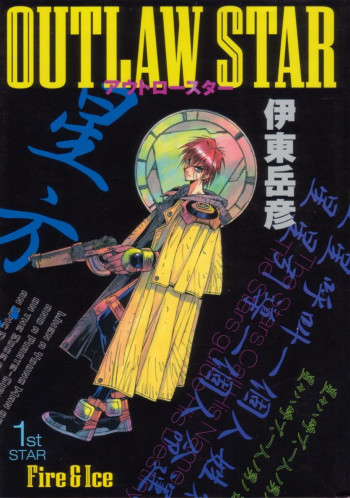Summary

A Love Letter to Whiskey
by Kandi Steiner
It’s crazy how fast the buzz comes back after you’ve been sober for so long.
Whiskey stood there, on my doorstep, just like he had one year before. Except this time, there was no rain, no anger, no wedding invitation — it was just us.
It was just him — the old friend, the easy smile, the twisted solace wrapped in a glittering bottle.
It was just me — the alcoholic, pretending like I didn’t want to taste him, realizing too quickly that months of being clean didn’t make me crave him any less.
But we can’t start here.
No, to tell this story right, we need to go back.
Back to the beginning.
Back to the very first drop.
This is my love letter to Whiskey. I only hope he reads it.
.
Read
A Love Letter to Whiskey on http://kissnovel.net
Martial Peak Reviews
A Love Letter to Whiskey by Kandi Steiner is a poignant exploration of addiction, love, and the complexities of human relationships. The novel dives deep into the tumultuous relationship between the protagonist and her addiction, personified as “Whiskey.” This metaphorical representation of alcohol serves as a powerful narrative device, allowing readers to engage with the protagonist’s struggles on a deeply emotional level. The blurb sets the stage for a story that is both heart-wrenching and relatable, capturing the essence of addiction and the challenges of recovery.
From the outset, Steiner's writing is evocative and lyrical, drawing readers into the protagonist's world. The use of vivid imagery and sensory details creates an immersive experience, making the reader feel the weight of the protagonist's cravings and the bittersweet nostalgia associated with her past. The opening scene, where Whiskey appears on her doorstep, is charged with tension and longing, setting the tone for the emotional rollercoaster that follows. Steiner expertly captures the dichotomy of desire and restraint, illustrating how the protagonist grapples with her past while striving for a sober future.
Thematically, the novel delves into the nature of addiction—not just to substances, but to people and experiences. The protagonist’s relationship with Whiskey is multifaceted; it is both a source of comfort and a destructive force. Steiner does not shy away from depicting the harsh realities of addiction, including the moments of weakness and relapse that many individuals face. This raw honesty is refreshing and adds depth to the narrative, allowing readers to empathize with the protagonist's journey.
Character development is another strong suit of this novel. The protagonist is portrayed with remarkable depth, showcasing her vulnerabilities, strengths, and the internal battles she faces. As readers, we witness her evolution from a place of denial and self-destruction to a more self-aware individual striving for redemption. Steiner’s ability to create a relatable and flawed character makes the story resonate on a personal level. The supporting characters, including friends and family, are also well-developed, each contributing to the protagonist’s journey in meaningful ways. Their interactions provide insight into the impact of addiction on relationships, highlighting the ripple effects that extend beyond the individual.
One of the most compelling aspects of A Love Letter to Whiskey is its exploration of love in its various forms. The protagonist's love for Whiskey is complicated; it is a love that brings both joy and pain. Steiner juxtaposes this with the protagonist's relationships with those who care for her, illustrating the struggle between the allure of addiction and the desire for genuine connection. This duality raises important questions about what it means to love and be loved, especially when addiction clouds judgment and distorts reality.
Steiner’s narrative is also rich with symbolism. Whiskey, as a character, embodies not only the substance itself but also the memories, emotions, and experiences tied to it. The protagonist's journey back to the beginning—“the very first drop”—serves as a metaphor for confronting one’s past and understanding the roots of addiction. This cyclical structure reinforces the idea that recovery is not a linear process; it is fraught with setbacks and moments of clarity. Steiner’s ability to weave these themes into the fabric of the story elevates the narrative, making it not just a tale of addiction, but a profound exploration of the human condition.
In comparison to other works that tackle similar themes, such as Beautiful Boy by David Sheff or Dry by Augusten Burroughs, Steiner’s approach is uniquely intimate. While those narratives often focus on the external impact of addiction on families and loved ones, A Love Letter to Whiskey centers on the internal struggle of the individual. This focus allows for a more personal and introspective reading experience, inviting readers to reflect on their own relationships with addiction, whether it be through substance use or emotional dependencies.
The pacing of the novel is well-crafted, with moments of tension balanced by reflective interludes. Steiner skillfully builds suspense as the protagonist navigates her feelings for Whiskey, leading to a climax that is both inevitable and cathartic. The resolution is satisfying, offering a sense of hope and the possibility of healing, even amidst the chaos of addiction. Steiner leaves readers with a poignant reminder that recovery is an ongoing journey, filled with both struggles and triumphs.
In conclusion, A Love Letter to Whiskey is a beautifully written and deeply affecting novel that captures the complexities of addiction and the power of love. Kandi Steiner’s lyrical prose and rich character development create a story that lingers long after the last page is turned. This book is not just for those who have experienced addiction firsthand; it is for anyone who has ever grappled with the dualities of love and loss. Steiner’s work is a testament to the resilience of the human spirit and the enduring quest for connection and understanding. It is a love letter that deserves to be read, understood, and cherished.
























Reviews 0
Post a Reviews: